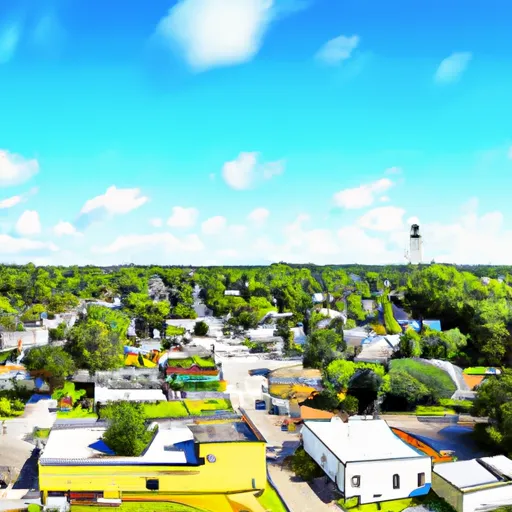-
 Snoflo Premium
Snoflo Premium
Get unlimited access to all our content
With no Ad interruptions! - Start Your Free Trial Login with existing account
Monticello
Eden Index
Climate
7.4
•
Recreation
4.2
•
Community
1.7
•
Safeguard
4.9/10

Located in Jefferson County, Florida, Monticello is a quaint town known for its rich history, natural beauty, and diverse outdoor recreation opportunities. Monticello experiences a humid subtropical climate with hot summers and mild winters. Summers are characterized by high temperatures averaging in the low to mid-90s°F, while winters are mild with average temperatures in the mid-60s°F. The area receives an average annual rainfall of around 56 inches.
Monticello is surrounded by numerous lakes, rivers, and springs, making it a haven for outdoor enthusiasts. The Aucilla River, Wacissa River, and Lake Miccosukee are popular destinations for boating, fishing, and kayaking. Additionally, the area boasts several freshwater springs, such as the Wacissa Springs and Madison Blue Springs, offering opportunities for swimming, snorkeling, and diving.
The region's hydrology is characterized by a complex network of rivers, creeks, and underground water systems. The Aucilla River and Wacissa River are part of the Big Bend Coast watershed, which flows into the Gulf of Mexico.
With its diverse outdoor offerings, Monticello provides ample opportunities for visitors and residents to connect with nature and enjoy an active lifestyle in a serene and picturesque environment.
What is the Eden Index?
The Snoflo Eden Index serves as a comprehensive rating system for regions, evaluating their desirability through a holistic assessment of climate health, outdoor recreation opportunities, and natural disaster risk, acknowledging the profound impact of these factors on livability and well-being.
Climate Health Indicator (CHI): 7.4
Monticello receives approximately
1485mm of rain per year,
with humidity levels near 87%
and air temperatures averaging around
20°C.
Monticello has a plant hardyness factor of
8, meaning
plants and agriculture in this region tend to thrive here all year round.
By considering the ideal temperature range, reliable water supplies, clean air, and stable seasonal rain or snowpacks, the Climate Health Indicator (CHI) underscores the significance of a healthy climate as the foundation for quality living.
A healthy climate is paramount for ensuring a high quality of life and livability in a region, fostering both physical well-being and environmental harmony. This can be characterized by ideal temperatures, reliable access to water supplies, clean air, and consistent seasonal rain or snowpacks.
Weather Forecast
Streamflow Conditions
Ochlockonee. Georgia
Area Rivers
Ochlockonee. Georgia
Snowpack Depths
Ochlockonee. Georgia
Reservoir Storage Capacity
Ochlockonee. Georgia
Groundwater Levels
Recreational Opportunity Index (ROI): 4.2
The Recreational Opportunity Index (ROI) recognizes the value of outdoor recreational options, such as parks, hiking trails, camping sites, and fishing spots, while acknowledging that climate plays a pivotal role in ensuring the comfort and consistency of these experiences.
Access to outdoor recreational opportunities, encompassing activities such as parks, hiking, camping, and fishing, is crucial for overall well-being, and the climate plays a pivotal role in enabling and enhancing these experiences, ensuring that individuals can engage in nature-based activities comfortably and consistently.
Camping Areas
| Campground | Campsites | Reservations | Toilets | Showers | Elevation |
|---|---|---|---|---|---|
| Georgia Veterans State Park | None | 273 ft | |||
| Marine Albany RV Military | None | 252 ft | |||
| Whitewater Creek County Park | 48 | 293 ft |
Catastrophe Safeguard Index (CSI):
The Catastrophe Safeguard Index (CSI) recognizes that natural disaster risk, encompassing floods, fires, hurricanes, and tornadoes, can drastically affect safety and the overall appeal of an area.
The level of natural disaster risk in a region significantly affects safety and the overall livability, with climate change amplifying these risks by potentially increasing the frequency and intensity of events like floods, fires, hurricanes, and tornadoes, thereby posing substantial challenges to community resilience and well-being.
Community Resilience Indicator (CRI): 1.7
The Community Resilience Indicator (CRI) recognizes that education, healthcare, and socioeconomics are crucial to the well-being of a region. The CRI acknowledges the profound impact of these elements on residents' overall quality of life. By evaluating educational resources, healthcare accessibility, and economic inclusivity, the index captures the essential aspects that contribute to a thriving community, fostering resident satisfaction, equity, and social cohesion.

